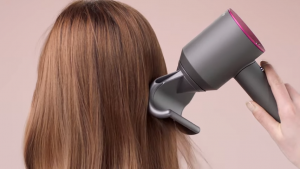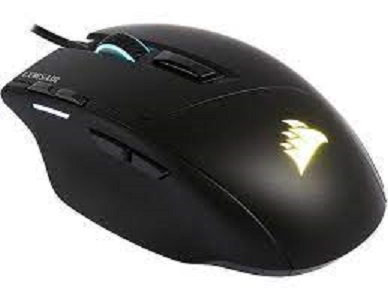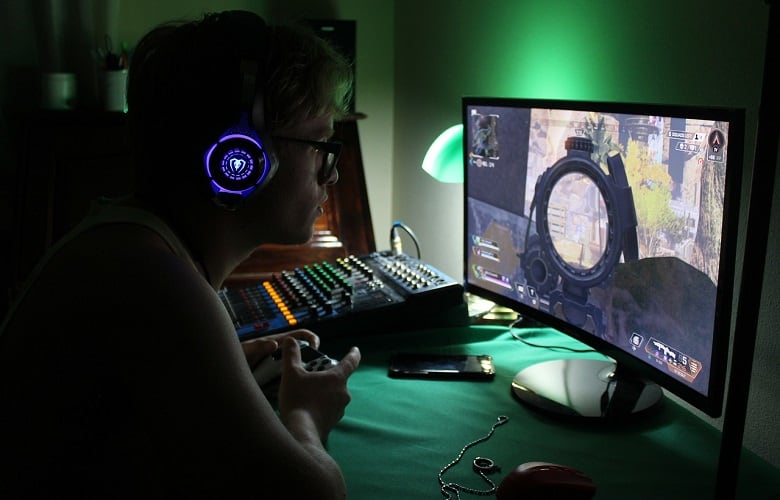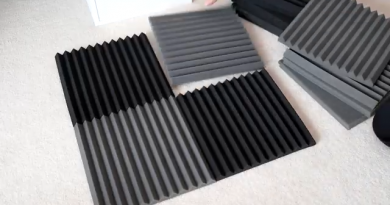How to Soundproof your Hair Dryer: Tips and Tricks on How to Reduce Noise
Do you hate being rudely awakened by the ear-splitting noise of your hair dryer? We all know how these devices can sound like a jumbo jet taking off, making them a major source of irritation for anyone around. In fact, a typical hair dryer can be as loud as 80-90 decibels! That’s louder than an alarm clock or dishwasher, and you probably use your hair dryer more often than either one of those things.
So, how can you reduce this noise? What qualities of a hair dryer affect its noise level, and is a quiet hair dryer worth buying? Many have attempted to solve this problem, trying everything from stuffing towels around the hair dryer to purchasing expensive soundproofing materials. However, finding a solution that works can be challenging. But fear not, because there are some creative and perhaps unconventional tips and tricks that can help reduce the noise of your hair dryer and finally allow you to enjoy some peace and quiet in the mornings. Join us on this journey of experimentation and discovery, as we delve into the world of hair dryer soundproofing and explore some ways to achieve a quieter blow-drying experience.

What causes Hair Dryers to be Loud?
Hair dryers are equipped with powerful motors that spin the fan blades to produce hot air for drying hair. The larger and more powerful the motor, the louder the hair dryer will be. Some hair dryers have higher-quality motors that are designed to be more efficient and less noisy, but these tend to be more expensive.
- Motor Vibrations: The main reason that hairdryers get so loud is because of the speed at which they operate. They have motors that let them rotate between 2000-2400 RPMs (rotations per minute). Any faster than this can cause damage to your hair, but more importantly – it will make extremely high-pitched sounds in order for it all to move around quickly enough.
- Fan Blades: The fan blades of a hair dryer are responsible for generating the air flow that dries hair. The faster the blades spin, the more air is pushed out, but this also creates more noise. Some hair dryers have specially designed blades that are optimized for quieter operation, but these may not be as effective at drying hair quickly.
- Size and Weight: Larger and heavier hair dryers tend to be louder because they typically have larger motors and fans. However, some lightweight hair dryers may also be noisy if they are poorly designed or have low-quality components.
- Air Flow Design: The way air flows through a hair dryer can affect its noise level. Some hair dryers have more efficient air flow designs that minimize turbulence and reduce noise. Others may have poor air flow design that creates more noise.
- Materials: The materials used in a hair dryer can also affect its noise level. Cheaper hair dryers may use lower-quality plastics or metals that vibrate and create more noise. Higher-end hair dryers may use more advanced materials that help to dampen sound and reduce noise.
When hair dryers are used in enclosed spaces, the sound is amplified. This usually occurs when the product is set on a counter near the user’s ears making it even louder for them to hear. All of this can be avoided with some simple modifications that will not alter how well your blow drier works but only reduce its noise levels.
How to Soundproof Your Hair Dryer?
You can DIY or simply buy special materials designed specifically for reducing loud noises. There are a few different ways in which people go about soundproofing their hair dryer.
1. Choose Better Place to Dry Your Hair
The simplest way to soundproof your hair dryer is by plugging it into a different outlet. If you have an extension cord, use that and simply move the dryer out of the bathroom and onto a counter in another room where there are no reflective surfaces or hard materials which can cause more noise.
There are various places in the house where it is better to dry your hair. The bathroom may not be the best place because of how hard tile surfaces can amplify sound, so choosing an area with carpet or rugs might be a better choice. If you have many windows inside your home then drying with opened windows on nice days is another option that will reduce noise levels by providing more space around you and less reflective surfaces for sounds to bounce off of.
2. Use a Hair Dryer with a Diffuser
Another option is to use a hair dryer with a diffuser and turn the heat and airflow down. A diffuser also called a concentrator, spreads air evenly so that all of it can become absorbed into damp strands as they’re dried rather than be pushed off course by an intense stream of hot wind. Attachments like these will slow down the operational RPMs (rotations per minute) which means that you’ll have to wait longer before you’re able to style your hair, but many users say that they do not mind this because they like the way their hair looks when it has been dried this way.
Using a diffuser attachment on your hairdryer can reduce sound by up to 50% so if you’re willing to wait for a bit longer in order to dry your hair, then this is an option that will help improve noise levels and potentially protect from heat damage as well.
3. Combine Powers and Setting of Your Hair Dryer
A combination of the settings on your hair dryer can also help reduce noise levels. For example, using a lower heat setting and higher airflow will make it less likely for sound to bounce off surfaces since there is not as much air being pushed around at once. You can try to run it in the lowest possible power. The drying process will take more time but you will avoid noise.
Most of the hair dryers are produced with ionization function and ceramic coating that works quieter but dry faster even if you use a low temperature and drying speed.
4. Wrap Your Hair Dryer in a Towel or Blanket
Wrapping your hair dryer in a towel or blanket is a simple yet effective DIY method to reduce noise levels. The towel or blanket will absorb the sound waves and prevent them from bouncing off hard surfaces, resulting in a muffled sound. To do this, you can wrap the towel or blanket around the hair dryer, ensuring that the entire dryer is covered except for the nozzle. This will allow the airflow to still come out without being obstructed.
It’s important to note that while this method can be effective, it’s not recommended to leave the hair dryer wrapped up for an extended period of time as it can cause overheating and potentially be a fire hazard. It’s best to only use this method for short periods of time and to monitor the hair dryer to ensure that it doesn’t become too hot to the touch. Additionally, make sure to choose a towel or blanket that is made of fire-retardant material to minimize any potential risks.
5. Buy Specialized Quiet Hair Dryers
A third way to reduce sound levels is by buying a hairdryer that has been designed specifically for less noise output such as those made by ionic technology. This style emits negative that coat wet hairs throughout drying so that static electricity isn’t produced. This means the dryer doesn’t have to work as hard or spin as fast because it has less resistance, so noise levels are reduced.
6. Use Earplugs
You can reduce noise from a workable hair dryer using earplugs so that you are not exposed to high levels of sound. There are plenty available at local pharmacies or online for relatively cheap prices, but note that it’s best to choose ones made specifically from materials that block out sounds rather than just muffle them since they’re more likely to be effective in protecting against loud noises caused by hairdryers that only alter the perceived volume instead of providing a barrier between you and noise.
DIY Soundproofing Project for Your Hair Dryer: Making a Mat
Making your own soundproofing mat for your hair dryer can be a fun and creative DIY project that saves you money and allows you to customize it to your own preferences. With this DIY soundproofing project, you can turn your hair dryer into a library whisperer (or close enough)!
Materials
- Foam mat (such as a yoga mat or exercise mat)
- Scissors or box cutter
- Marker or pen
- Ruler or straight edge
- Adhesive spray (optional)
Instructions
- Start by measuring your hair dryer and mark the dimensions on the foam mat using a marker or pen.
- Cut out the marked area on the foam mat using scissors or a box cutter. You can also use a ruler or straight edge to help with cutting straight lines.
- Optional: If you want to make sure the foam stays in place, apply adhesive spray to one side of the foam mat and stick it to a surface (such as a bathroom countertop or table).
- Place your hair dryer on top of the foam mat and turn it on to see if there’s a noticeable reduction in noise. If not, consider adding additional layers of foam or other sound-absorbing materials to the mat.
This DIY soundproofing mat can be easily stored and reused whenever you need to dry your hair without disturbing others around you.
Are Quiet Dryers Effective?
As a general rule, no, quiet dryers will not be as effective at reducing noise levels as the methods mentioned above. If you have to choose which option is best for your needs then it’s advised that you go with one of those first before even considering purchasing a hair dryer designed specifically to reduce sound output.
But if your hair dryer is too loud or irritating to use, it may be time for an upgrade. You can buy such a specialized hair dryer. Quiet hairdryers are effective and worth considering if noise has been a problem in the past when using one at home or trying to concentrate while drying your hair in public places such as a salon where other customers need peace and quiet too.
In Conclusion
So, soundproofing your hair dryer can greatly improve your daily routine and create a more peaceful environment. You can use both simple do-it-yourself solutions, such as using a rubber mat, and more advanced methods and techniques. Find the one that works best for you and enjoy the quiet and pleasant process of blow drying your hair!



